- Kenmore refrigerator water filters
- Whirlpool refrigerator water filters
- Samsung refrigerator water filters
- GE refrigerator water filters
- LG refrigerator water filters
- Frigidaire refrigerator water filters
- KitchenAid refrigerator water filters
- Maytag refrigerator water filters
- Kenmore Elite refrigerator water filters
- Estate refrigerator water filters
- GE Profile refrigerator water filters
- Amana refrigerator water filters
- Bosch refrigerator water filters
- Dacor refrigerator water filters
- Electrolux refrigerator water filters
How to replace the drive block on a top-load washer
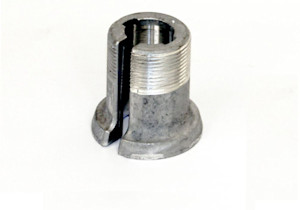
This step-by-step washer repair guide explains how to replace the drive block on a top-load washer. The drive block is on top of the spin tube and rotates the spin basket during the spin cycle. If the drive block wears out, the basket wobbles and rattles during the spin cycle or won’t spin at all. Before replacing the drive block, make sure the spanner nut under the agitator that holds the spin basket against the drive block isn’t loose. If the spanner nut is tight and the basket still wobbles, replace the drive block with a manufacturer-approved replacement part.
You can use the steps in this repair procedure to replace the drive block in Kenmore, Whirlpool, Maytag, Amana, Roper, Crosley and Estate top-load washers.
Quick links
Instructions
Tools required
Slot screwdriver
Phillips screwdriver
Socket wrench set and ratchet
Spanner wrench
Hammer
Work gloves
Repair difficulty
Time required
60 minutes or less
Repair difficulty
Time required
60 minutes or less
Instructions
- 01.
Shut off the electricity
Unplug the power cord from the wall outlet.
Wear work gloves to protect your hands.
- 02.
Open the control console
Pull the plastic end caps from the sides of the control console.
Remove the screws at the base of the control console.
Pull the control console slightly forward and then swing it up and back over the top of the back panel.
Tip: Some models have the screws on the back of the end caps instead of on the front of the control console. Other models have spring clips under the end caps instead of screws. Remove the rear screws or use a putty knife to release the spring clips.
PHOTO: Remove the plastic endcaps from the control console.

PHOTO: Remove the screws at the base of the control panel console.
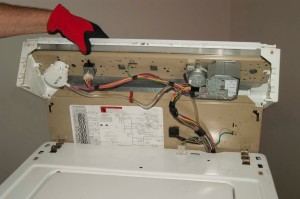
PHOTO: Flip the console up and back.
- 03.
Remove the cabinet
Unplug the wire harness from the lid switch on the washer’s top panel.
Release the clips that secure the cabinet to the washer’s back panel. Using a slot screwdriver, pry the clips forward to release the clips from the slots in the top panel.
Lift the back of the cabinet and slide the cabinet forward to remove it from the washer frame.
Set the cabinet out of the way.

PHOTO: Unplug the lid switch wire harness connector.
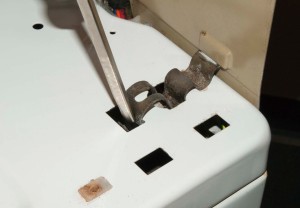
PHOTO: Insert a screwdriver to pry the clips forward.

PHOTO: Release the cabinet clip.
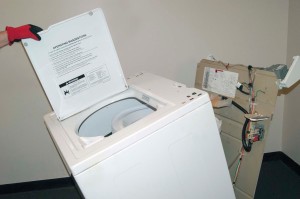
PHOTO: Remove the washer cabinet from the frame.
- 04.
Remove the tub ring
Pull the dispenser hose off of the bottom of the bleach dispenser.
Push down on the top of the tub ring and pull the locking tabs that hold the tub ring in place on the top of the outer tub.
Remove the tub ring from the top of the outer tub.
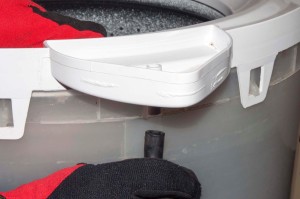
PHOTO: Pull the bleach hose off the bottom of the dispenser.
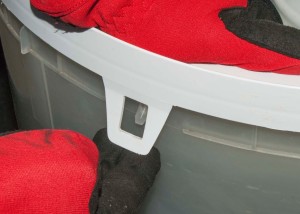
PHOTO: Release the tub ring clips.

PHOTO: Pull the tub ring off the outer tub.
- 05.
Remove the agitator
If the has a fabric softener dispenser at the top of the agitator, remove the fabric softener dispenser.
Pry the cap off of the top of the agitator.
Remove the 7/16" bolt and washer that secures the agitator to the motor shaft.
Grip the bottom of the agitator and pull the entire agitator assembly up and out of the washer.
Tip: If your washer model has a plastic spring retainer with a square hole at the top of the spring retainer, insert a 1/2" socket drive extension into the square hole and rotate the spring retainer counter-clockwise to release and remove the retainer.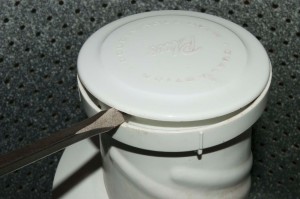
PHOTO: Pry off the agitator cap.
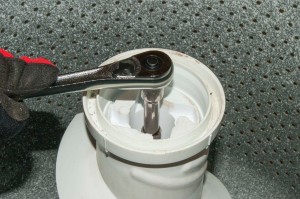
PHOTO: Remove the agitator bolt.
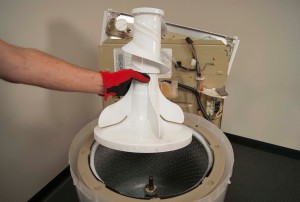
PHOTO: Remove the agitator from the washer.
- 06.
Remove the spin basket
Remove the agitator clip from the top of the agitator drive shaft.
Use a spanner wrench to remove the spanner nut, by positioning the spanner wrench with the notches of the wrench engaged in the slots of the spanner nut. Then strike the arm of the spanner wrench to break the spanner nut loose in the counter-clockwise direction and remove the spanner nut.
Carefully lift the spin basket out of the washer.
Tip: Some washer models do not have an agitator clip on the agitator shaft.Warning: The spin basket is awkward to remove and is fairly heavy. Use a helper to remove the spin basket if necessary.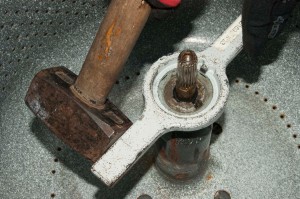
PHOTO: Position the spanner wrench on the spanner nut.
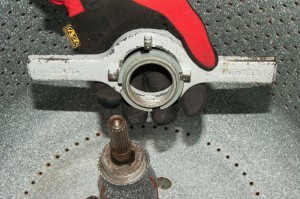
PHOTO: Remove the spanner nut from the shaft.
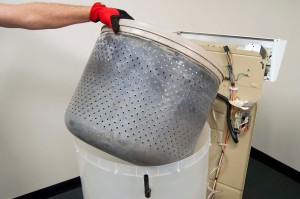
PHOTO: Lift the spin basket out of the tub.
- 07.
Remove the drive block
Tap the bottom of the drive block with a hammer to loosen it and remove the drive block from the basket drive shaft.
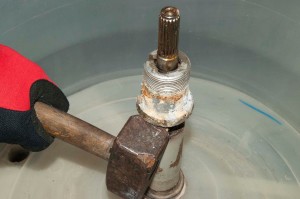
PHOTO: Remove the drive block from the drive shaft.
- 08.
Install the new drive block
The new drive block has slots that fit over tabs at the top of the basket drive shaft. Position the new drive block properly so the tabs fit into the slots in the basket drive.
Push the new drive block down and tap it into place with a hammer.
- 09.
Reinstall the spin basket
Lower the spin basket into the washer tub.
Thread the spanner nut onto the top of the new drive block.
Use the spanner wrench and a hammer to securely tighten the spanner nut.
Reinstall the agitator clip on the top of the agitator drive shaft.
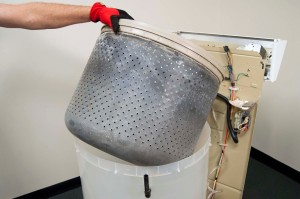
PHOTO: Reinstall the spin basket.
- 10.
Reinstall the agitator
Slide the agitator onto the agitator drive shaft.
Insert the agitator bolt and the washer. Tighten the agitator bolt firmly.
Snap the agitator cap onto the top of the agitator assembly.
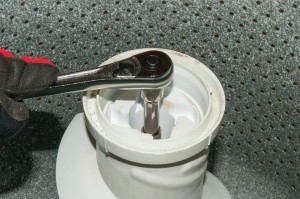
PHOTO: Reinstall the agitator.
- 11.
Reinstall the tub ring
Position the tub ring on the top of the outer tub and line up the locking tabs. Push down on the top of the tub ring and snap the locking tabs in place. Reinstall the dispenser hose on the bottom of the bleach dispenser.
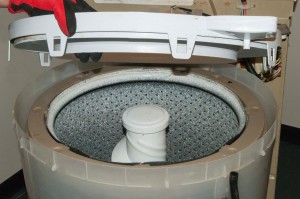
PHOTO: Reinstall the tub ring.

PHOTO: Reinstall the dispenser hose on the bleach dispenser.
- 12.
Reinstall the cabinet
Position the cabinet in front of the washer.
Tilt the back of the cabinet up slightly and keep the front lip of the cabinet on the floor. To position the front lip under the washer frame, push the base of the cabinet forward with your foot to slide the front lip of the cabinet under the front base of the washer. Then lower the back of the cabinet so the holes in the back of the sides of the cabinet engage the alignment tabs at the back of the sides of the washer base.
Reinstall the spring clips at the top of the cabinet.
Plug the lid switch wire harness back into the receptacle on the top panel of the washer.
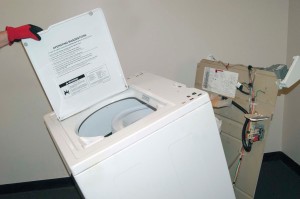
PHOTO: Reinstall the cabinet.
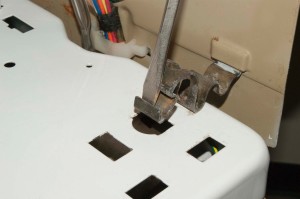
PHOTO: Reinstall the spring clips at the top of the washer cabinet.
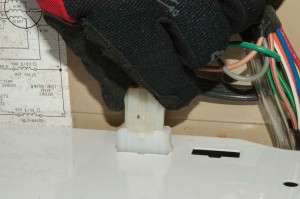
PHOTO: Plug in the lid switch wire harness.
- 13.
Reinstall the control console
Flip the control console down and position it properly on the top panel of the washer.
Reinstall the mounting screws at the base of the control console.
Snap the plastic end caps onto the sides of the control console.
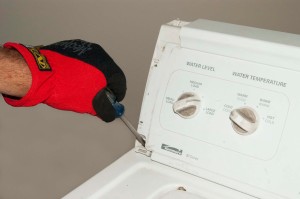
PHOTO: Reinstall the control console screws.
- 14.
Restore power
Plug the washer into the electrical outlet.
Warning: Undertaking repairs to appliances can be hazardous. Use the proper tools and safety equipment noted in the guide and follow all instructions. Do not proceed until you are confident that you understand all of the steps and are capable of completing the repair. Some repairs should only be performed by a qualified technician.
Most common symptoms to help you fix your washers
Choose a symptom to see related washer repairs.
Main causes: clogged drain hose, house drain clogged, bad drain pump, water-level pressure switch failure, bad control b…
Main causes: worn agitator dogs, bad clutch, broken motor coupler, shifter assembly failure, broken door lock, suspensio…
Main causes: bad lid switch or door lock, bad timer or electronic control board, wiring failure, bad water inlet valve a…
Main causes: broken lid switch or lid lock, bad pressure switch, broken shifter assembly, faulty control system…
Main causes: unbalanced load, loose spanner nut, worn drive block, broken shock absorber or suspension spring, debris in…
Main causes: no water supply, bad water valves, water-level pressure switch failure, control system failure, bad door lo…
Main causes: lack of electrical power, wiring failure, bad power cord, electronic control board failure, bad user interf…
Main causes: leaky water inlet valve, faulty water-level pressure switch, bad electronic control board…
Main causes: water heater failure, bad water temperature switch, faulty control board, bad water valve, faulty water tem…
Repair guides for top-load washers
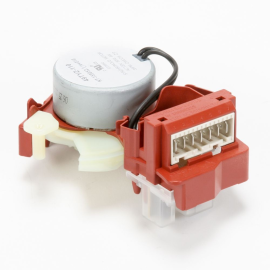
How to replace the shifter assembly in a top-load washer
The shifter motor switches the washer's drive motor between the agitate and spin modes. If your washer's basket won't bu…
Repair difficulty
Time required
45 minutes or less
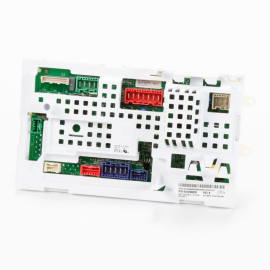
How to replace the electronic control board on a top-load washer
The electronic control board is a major component that orchestrates the washer's functions. These instructions explain h…
Repair difficulty
Time required
30 minutes or less
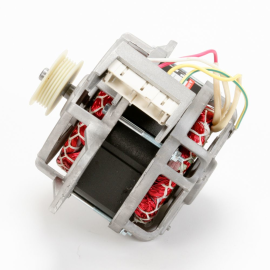
How to replace the drive motor in a top-load washer
The drive motor creates the rotation that turns the spin basket and agitator. If those components won't budge, replace t…
Repair difficulty
Time required
45 minutes or less
Effective articles & videos to help repair your washers
Use the advice and tips in these articles and videos to get the most out of your washer.
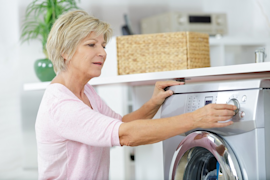
Find tips for using your washing machine efficiently to save energy and help reduce utility bills.…

Learn about all the convenient features on our Sears PartsDirect website that make your parts purchases easier.…
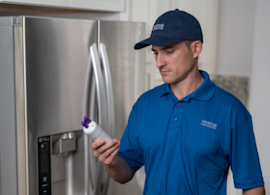
Get answers to frequently asked questions about Sears and Sears PartsDirect.…